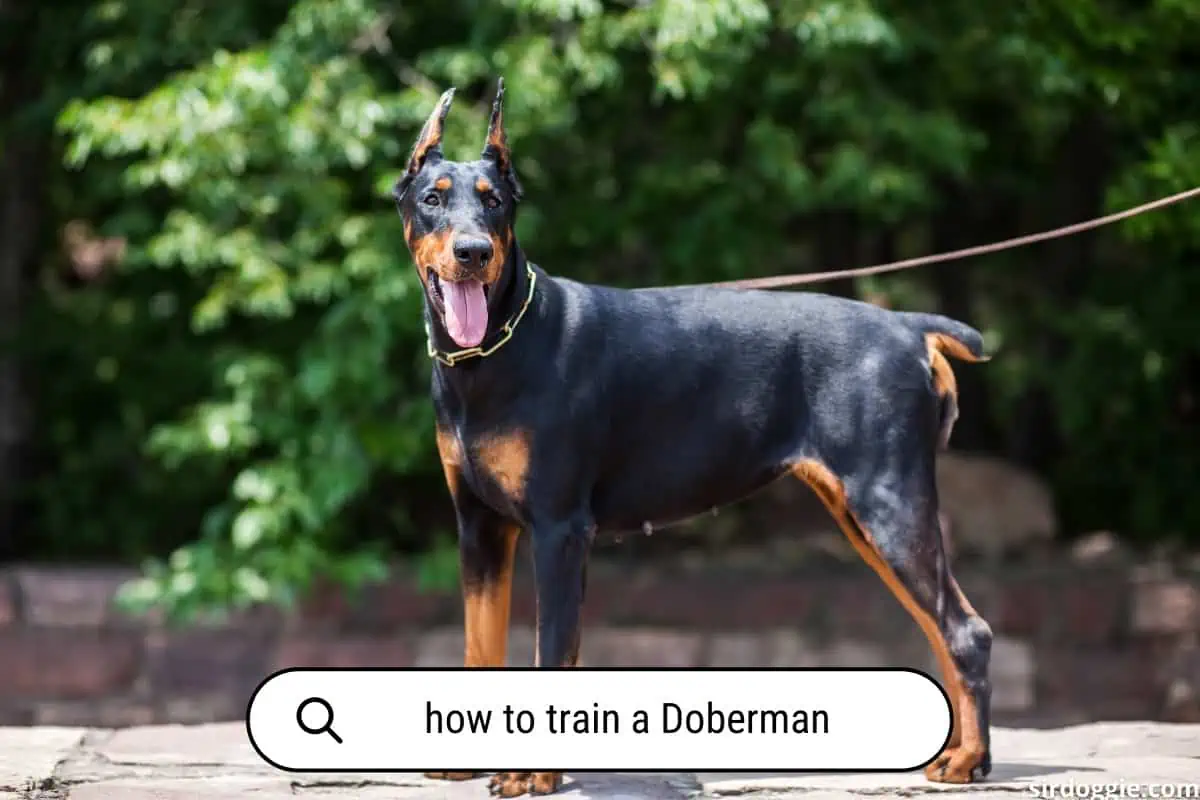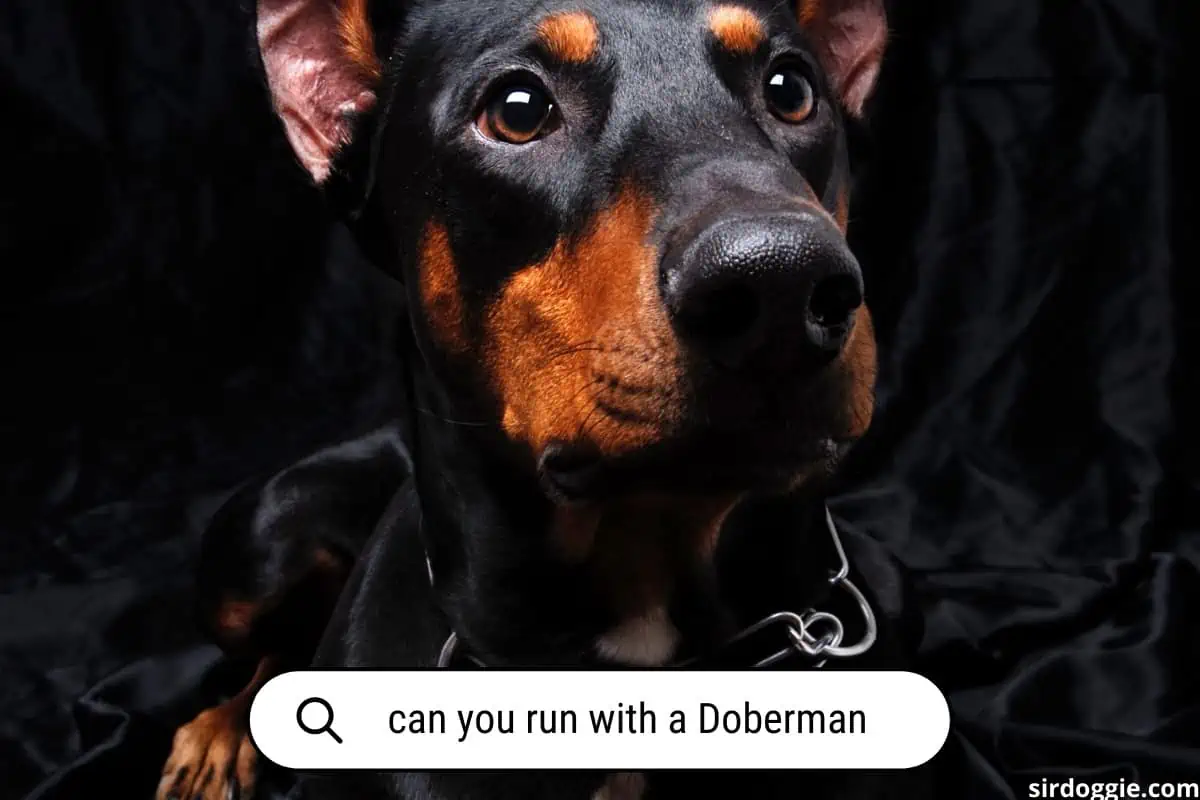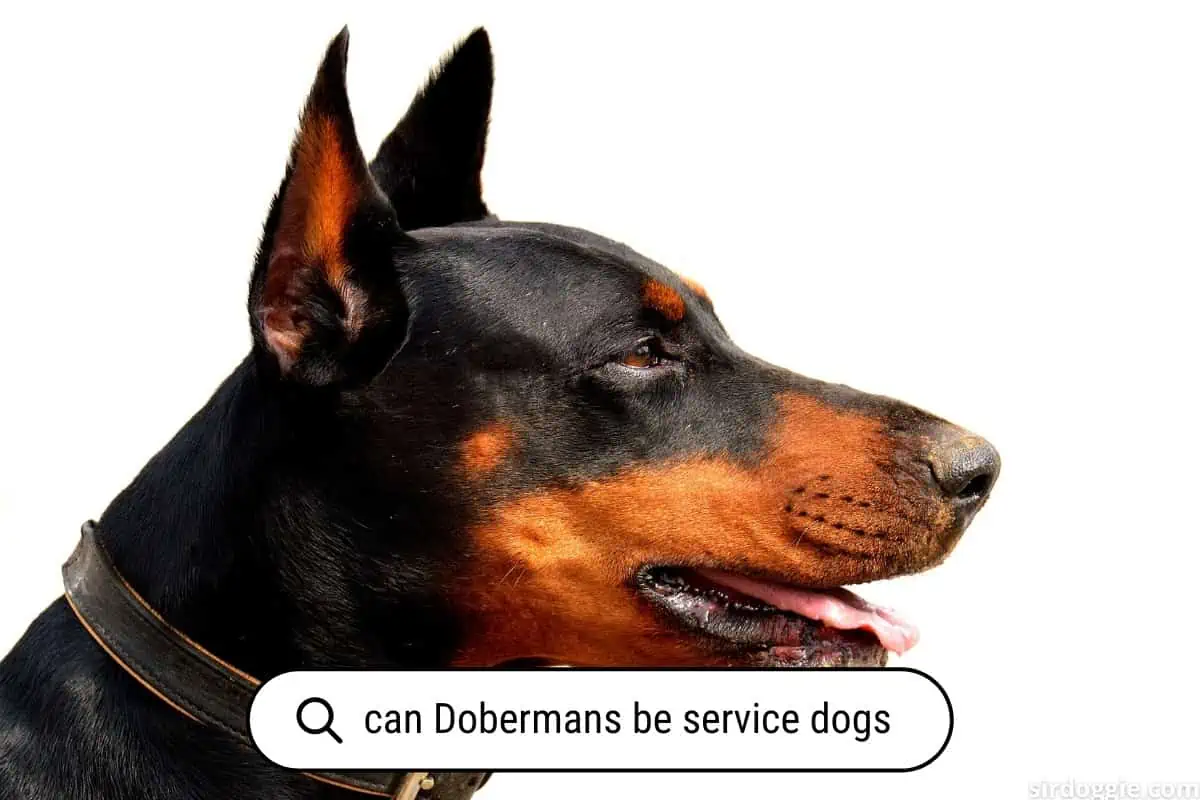How to Train a Doberman Timeline: Well-Behaved Dog
Doberman Pinschers are intelligent, loyal, and highly trainable dogs. They are known for their alertness and protective nature, making them great guard dogs.
However, training a Doberman requires patience, consistency, and positive reinforcement. In this article, we will provide you with practical tips and tricks on how to train your Doberman, from basic obedience commands to addressing behavioral issues.

Training a Doberman is a rewarding experience for both the dog and the owner. A well-trained Doberman is a joy to be around, and they make great companions for families and individuals alike.
However, it’s important to note that each Doberman is unique, and training methods may vary depending on the dog’s personality and temperament. With that said, there are some general training principles that can help you establish a strong bond with your Doberman and teach them to be well-behaved and obedient.
The Challenges of Training Dobermans
As a family dog lover, my friends and family often ask me for advice on training. Many have Dobies, so I have witnessed many times the challenges of training Dobermans.

Training a Doberman may indeed require effort, but their intelligence and loyalty make the process incredibly rewarding. Dobermans are highly perceptive and eager to learn, so with consistency and dedication, you’ll be amazed by the progress you and your furry companion can make together.
Remember that patience and positive reinforcement go a long way in strengthening the bond between you and your Doberman, allowing you both to reap the benefits of well-rounded training.
As you continue to work with your Doberman, their innate desire to please you and their natural problem-solving abilities will shine through, making your training sessions a testament to the remarkable relationship you share. So, stay encouraged and take pride in the knowledge that your efforts will be rewarded with a well-trained, loyal, and loving Doberman by your side.
Essential Commands and Intial Training Timeline for Dobermans
Teaching your Doberman commands at an early age helps establish good behavior and strengthens the bond between you and your dog. Here’s a list of the first commands you should teach your Doberman and the suggested age to start training:
- Name recognition (8-10 weeks): Teach your puppy to respond to their name, creating the foundation for further commands and training.
- Sit (8-10 weeks): This basic command helps your Doberman learn impulse control and serves as a starting point for more advanced commands.
- Down (10-12 weeks): Training your puppy to lie down on command is useful for teaching calm behavior and is a prerequisite for the “stay” command.
- Stay (12-14 weeks): The “stay” command teaches your Doberman patience and self-control, especially in distracting environments.
- Come (12-14 weeks): Also known as “recall,” this command is essential for your dog’s safety and can be used to prevent them from running off or engaging in unwanted behaviors.
- Leave it (14-16 weeks): This command helps your Doberman resist the temptation to pick up or engage with objects, food, or animals that could be dangerous or off-limits.
- Heel (16-18 weeks): Teaching your Doberman to walk politely by your side on a leash without pulling or straining is crucial for enjoyable walks and maintaining control in public spaces.
- Off (18-20 weeks): The “off” command teaches your dog not to jump on people or furniture and promotes respectful behavior.
Remember that every dog learns at a different pace, and consistency, patience, and positive reinforcement are crucial for successful training. It’s best to start training your Doberman as soon as they join your household, usually around 8-10 weeks old, but it’s never too late to begin teaching new commands and reinforcing good behavior.
Basic Commands

Sit
The “sit” command is one of the most basic commands that your Doberman should learn. It is used to control your dog’s behavior and help them stay calm in different situations. To train your Doberman to sit, follow these steps:
- Hold a treat above your dog’s nose and slowly move it back towards their tail.
- As your dog’s head follows the treat, their rear end should lower to the ground.
- As soon as your dog sits, give them the treat and praise them.
Repeat this process several times until your Doberman learns to sit on command.
Stay
The “stay” command is important for keeping your Doberman in one place until you are ready to release them. To train your Doberman to stay, follow these steps:
- Start with your dog in a sit position.
- Hold your hand up in front of your dog’s nose and say “stay.”
- Slowly take a step back while keeping your hand up and facing your dog.
- If your dog stays in place, praise them and give them a treat.
- If your dog moves, start over and try again.
Come
The “come” command is used to call your Doberman to come to you. To train your Doberman to come, follow these steps:
- Start with your dog on a leash.
- Walk a few steps away from your dog and say “come.”
- When your Doberman comes to you, praise them and give them a treat.
- Gradually increase the distance between you and your dog as they become more comfortable with the command.
Heel
The “heel” command is used to keep your Doberman walking calmly beside you. To train your Doberman to heel, follow these steps:
- Start with your dog on a leash.
- Hold the leash in your left hand and a treat in your right hand.
- Place the treat in front of your dog’s nose and say “heel.”
- Start walking and keep the treat close to your left leg.
- If your dog walks calmly beside you, praise them and give them the treat.
- If your dog pulls or gets distracted, stop walking and start over.

Socialization
Socialization is an essential part of training a Doberman Pinscher puppy. It helps them learn how to interact with other dogs and people in a positive way. Here are some tips for socializing your Doberman:
- Expose your puppy to different environments and situations, such as parks, busy streets, and other dogs.
- Introduce your puppy to different people, including children, adults, and seniors.
- Use positive reinforcement to reward good behavior, such as sitting calmly when meeting new people or dogs.
- Start socializing your puppy as early as possible, ideally between 3 and 14 weeks of age.
It’s important to remember that socialization isn’t just about exposing your puppy to new things. It’s also about teaching them how to react in different situations. Here are some things to keep in mind:
- Always supervise your puppy when socializing them to ensure their safety.
- Don’t force your puppy into situations that make them uncomfortable or scared.
- Be patient and consistent with your training, and don’t expect immediate results.
- Use positive reinforcement to encourage good behavior and discourage bad behavior.
By socializing your Doberman Pinscher puppy, you can help them become a well-adjusted and happy adult dog. With patience, consistency, and positive reinforcement, you can ensure that your puppy learns how to interact with the world around them in a positive way.
House Training
House training a Doberman requires patience, consistency, and positive reinforcement. The process can take several weeks to months, depending on the puppy’s age, personality, and previous experience.
Here are some tips to help you house train your Doberman puppy:
- Establish a routine: Take your puppy outside to the same spot every time he needs to go potty. Do this first thing in the morning, after meals, after naps, and before bedtime.
- Use a cue word: Choose a word or phrase that you will use every time you take your puppy outside. This will help him associate the word with going potty. Say the word or phrase as soon as you take him outside.
- Watch for signs: Keep an eye on your puppy for signs that he needs to go potty, such as sniffing around, circling, or whining. When you see these signs, take him outside immediately.
- Praise and reward: When your puppy goes potty outside, praise him and give him a treat right away. This will help him understand that going potty outside is a good thing.
If your puppy has an accident inside, don’t punish him. Instead, clean up the mess with an enzymatic cleaner to remove the scent. Punishing your puppy can make him afraid of you and may cause him to hide his accidents instead of going potty outside.
Remember, house training takes time and effort, but with patience and consistency, your Doberman puppy will learn quickly and become a well-behaved member of your family.
Leash Training
Leash training your Doberman is an essential part of their obedience training. It teaches them to walk calmly and confidently by your side, and helps to prevent them from pulling or lunging at other people or dogs. Here are some tips to help you leash train your Doberman:
- Start with a well-fitted collar or harness and a sturdy leash
- Let your Doberman get used to wearing the collar or harness before attaching the leash
- Begin by walking your Doberman in a quiet, low-distraction area
- Hold the leash in your hand and keep it loose, but be prepared to tighten it if your dog pulls or tries to run
When your dog is walking calmly by your side, reward them with praise and treats. If they start to pull or lunge, stop walking and stand still until they calm down. Then resume walking. Consistency is key when leash training your Doberman, so make sure to practice regularly and be patient.
It’s important to remember that leash training takes time and patience. Don’t expect your Doberman to be perfectly trained overnight. With consistent practice, positive reinforcement, and lots of patience, you can successfully leash train your Doberman.
Advanced Training
Once your Doberman has mastered the basics, it’s time to move on to more advanced training. This can include agility, obedience, and protection training. Each type of training requires patience, consistency, and dedication to achieve success.
Agility Training
Agility training is a great way to challenge your Doberman both physically and mentally. It involves running through obstacle courses that require jumping, weaving, and crawling. This type of training can help improve your dog’s coordination, speed, and overall fitness. Some tips for agility training include:
- Start with simple obstacles and gradually increase the difficulty level
- Use positive reinforcement to encourage your dog to complete each obstacle
- Practice regularly to maintain your dog’s agility skills
Obedience Training
Obedience training is essential for any Doberman, but it becomes even more important for those who will be working as service dogs or competing in obedience trials. This type of training focuses on teaching your dog to follow commands quickly and accurately. Some tips for obedience training include:
- Use clear and consistent commands
- Start with basic commands such as sit, stay, and come, and gradually move on to more advanced commands
- Use positive reinforcement to reward good behavior
Protection Training
Protection training is not for every Doberman, but it can be beneficial for those who will be working as guard dogs or in law enforcement. This type of training involves teaching your dog to protect you and your property from potential threats. Some tips for protection training include:
- Work with a professional trainer who has experience in protection training
- Start with basic obedience training before moving on to protection training
- Use caution and always prioritize safety during protection training

Problem Behaviors
Barking
Dobermans are known for being vocal dogs, and excessive barking can be a problem behavior. This can be due to boredom, anxiety, or territoriality. To address this behavior:
- Provide plenty of exercise and mental stimulation
- Teach the “quiet” command
- Use positive reinforcement to reward quiet behavior
Chewing
Chewing is a natural behavior for dogs, but destructive chewing can be a problem. To address this behavior:
- Provide plenty of chew toys and bones
- Keep valuable items out of reach
- Supervise your dog when they are loose in the house
Jumping
Dobermans can be jumpers, which can be problematic when greeting people or in other situations. To address this behavior:
- Teach your dog the “off” command
- Ignore your dog when they jump up
- Ask guests to ignore your dog until they are calm
Aggression
Aggression can be a serious problem behavior in Dobermans, and it’s important to address it as soon as possible. To address this behavior:
- Consult with a professional dog trainer or behaviorist
- Use positive reinforcement training methods
- Teach your dog alternative behaviors to replace aggressive ones

Family Dog Expert Author
Hi there! I’m Stuart, a devoted dog lover and family dog expert with over a decade of experience working with our furry companions. My passion for dogs drives me to share my knowledge and expertise, helping families build strong, loving bonds with their four-legged friends. When I’m not writing for SirDoggie, you’ll find me hiking, playing with my beautiful dog, or studying music.


